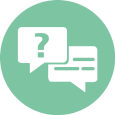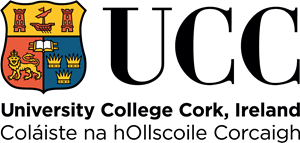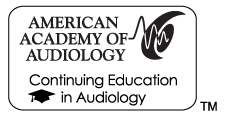Interacoustics Academy Clinical Diploma
Newborn Hearing Assessment -
Pediatric Diagnostic Auditory Evoked Potentials

What is the Clinical Diploma?
The Clinical Diploma is an online course designed to deliver theoretical and practical training for evoked potential testing in newborns. Covering auditory brainstem response (ABR) assessment, otoacoustic emissions (OAEs) and auditory steady state response (ASSR) testing, this course will equip delegates with the knowledge and skills to perform accurate hearing assessments in the newborn population.
The Clinical Diploma is approved by Audiology Australia for 25 CPD points and by the American Academy of Audiology for 2.15 CEUs.
The Clinical Diploma is accredited in South Africa with the HCPSA for 30 CEU points on successful completion.

How does the course work?
You will follow case studies through from the point of referral, via the diagnostic process to the point of decision making regarding their management. Video presentations, demonstrations and practical sessions will be used to familiarise delegates with evoked potentials equipment, patient preparation, testing technique, establishing threshold, results interpretation and the management of straight forward and complex scenarios. Your Interacoustics Academy course tutors will guide you through a series of interactive tasks and knowledge checks, as well as practical components to allow you to get hands-on, in order to facilitate the optimum learning experience.

Who is this course for?
This course is ideal for any clinician new to evoked potentials testing in young infants, or for more experienced clinicians seeking a refresher or update to their clinical practice. You will need access to an evoked potentials system such as the Interacoustics Eclipse in order to complete the compulsory practical components of the Diploma.
University Partnership

Earn Master Level Credits (UK 10 | IRL/EU 5) with University of Cork
The Interacoustics Academy is delighted to have partnered with University College Cork in Ireland, to offer our diploma as a compliment to the credit bearing course "Newborn Hearing Screening: Objective Assessment of Paediatric Hearing in Neonates" which is due to take place in UCC on the 29th and the 30th of November 2024.
This collaboration will enable attendees to a discounted rate of €200 for the diploma which can be completed alongside or after the UCC course which costs € 535. Total price for both elements is €735
To sign up click here to be directed to the UCC page:
ucc.ie/en/ct6102/
What will this course cover?
- The importance of early intervention and newborn hearing screening programmes
- Referral routes into diagnostic ABR and the different options available
- Pre-appointment preparation: what your clinic can do
- How to create the ideal testing
environment - How to check for and manage
environmental and patient noise - Protocol management: how to
adapt the parameters available for
the best ABR test
- What to do when the patient first arrives
- History taking, electrode placement and impedance checking
- Natural sleep vs sedation: which is best?
- What other tests should be performed, and when
- Starting the test: stimuli, intensity levels, frequencies, transducers, ear side and discharge levels
- The importance of synchronised neural firing and how different stimuli affect this
- Broadband vs frequency specific stimuli
- Evidence to support the use of the CE-Chirp® family of stimuli
- The categorisation of individual ABR waveforms
- What is threshold and how do we define it in the world of ABR testing from the series of ABR waveforms recorded
- Testing strategy for efficient ABR threshold identification
- The need for and evidence behind ABR correction factors
- What correction factors are available and how do we apply these values?
- The problem if we do not use ABR correction factors
- The importance of performing bone conduction ABR testing
- Understanding stimuli and transducer effects
- Testing strategy and trouble shooting: practical tips
- 2 channel / contra-curve bone conduction testing
- The pathophysiology of ANSD
- The diagnostic process for identifying ANSD
- How to record a cochlear microphonic
- What is ASSR testing and how is it performed?
- Clinical application of ASSR testing for the newborn population
- Integrating ASSR testing into the clinical pathway
- Sensorineural hearing losses, mild hearing losses, conductive hearing losses, asymmetrical losses, mixed losses, microtia and atresia
- The difference between masking in evoked potential testing and pure tone audiometry: why an alternative approach is required
- ABR and ASSR masking calculators: tools to establish if and when masking is required, and how to much masking noise to apply
- How to identify and mark wave V
- Strategies for when wave V isn’t identifiable
What do I need to do?
In order to obtain the Interacoustics Academy Clinical Diploma, you will need to navigate through the course. There are a total of 16 lessons, each of which should take between 1 and 2 hours to complete. However, there is no set time limit and you can revisit each lesson as many times as you wish. You may take as long as you wish to complete the full course. Through the course you will find a series of tasks, questions and interactions to assist in your learning experience and check your knowledge. Some of these tasks are compulsory and you will need to submit evidence of completion to the Interacoustics Academy in order to obtain your Diploma. At the end of the course, the final step is completing an exam, which you must achieve a score of 80% or higher in order to pass. After you have passed the exam and submitted the compulsory tasks, we will be delighted to award you with your Clinical Diploma Certificate.
Cost: $850 USD
To learn more about the Clinical Diploma, we invite you to watch the following video from course director Amanda Goodhew.
Presenters: Amanda Goodhew, Jack Bennett and Leigh Martin.

Amanda Goodhew
Amanda holds a Master's degree in Audiology from the University of Southampton, where she now teaches as a Visiting Academic. She has extensive experience holding senior audiologist positions in numerous NHS hospitals and clinics, where her primary focus has been pediatric audiology. Her specific areas of interest include electrophysiology (in particular ABR, ASSR and cortical testing), neonatal diagnostics and amplification and the assessment and rehabilitation of patients with autism and complex needs. Amanda has a particular interest in pediatric behavioral assessment and has twice held the Chairperson position for the South London Visual Reinforcement Audiometry Peer Review Group, and is a member of the Reference Group for the British Society of Audiology Pediatric Audiology Interest Group. Amanda also works as an independent technical assessor, undertaking quality assessment for audiological services throughout the UK, and is a member of the expert reference group for the James Lind Alliance Priority Setting Partnership on Childhood Deafness and Hearing Loss.

Jack Bennett
Jack is an Audiologist, clinical trainer and lecturer from the UK. Having studied Audiology at Aston University he gained experience in clinical diagnostic Audiology at Worcester Royal Hospital and extensive rehabilitative Audiology experience for a private Audiology company. He has been teaching and training in Audiology for much of his career, starting as a mentor and developing into managing the continuous training of other Audiologists. He has taught clinical Audiology in many countries around the world with his work as an International clinical Trainer with the Interacoustics Academy. Through clinical education and international conference speaking he has introduced new concepts and tests to multiple countries as well as updating and progressing the diagnostics of experienced clinicians and medics. His work at Interacoustics UK as the Clinical Manager has Jack managing the various educational activities both for internal staff and in formal update training for Audiologists and medics in the UK. Jack’s academic teaching started at Aston University and now as an Honorary teaching fellow he teaches on various topics such as vestibular diagnostics and techniques in auditory rehabilitation at both undergraduate and postgraduate levels. He is the module leader for the Psychoacoustics module on the Educational Audiology course at Mary Hare school/Hertfordshire University and also lecturers on other modules in Anatomy, Physics of Sound and Diagnostic techniques.

Leigh Martin
Leigh Martin is a British Audiologist and adjunct lecturer at the University of Cork, Ireland. Clinically, he has worked in the National Health Service specializing in paediatric audiology as well as vestibular diagnostics and rehabilitation. Leigh has also sat on the board of directors for the British Academy of Audiology. Since 2013, Leigh has supported the growth and development of the Interacoustics Academy and holds the position of Director of the Academy. Leigh has presented at numerous scientific conferences and meetings across a diverse range of audiological topics as well as having published papers in both video head impulse testing (vHIT) and wideband tympanometry.
Payment
Direct payment is by credit card. If you are unable to pay by credit card and require a purchase order to be raised, please contact your local Interacoustics representative for assistance. If you are intending to make a bulk purchase of multiple Diplomas then please also contact your local Interacoustics representative for pricing information.
Fee: 850 USD

Interacoustics is approved by the American Academy of Audiology to offer Academy CEUs for this activity. Attending is worth a maximum of 2.15 CEUs. Academy approval of this continuing education activity is based on course content only and does not imply endorsement of course content, specific products, or clinical procedure, or adherence of the event to the Academy’s Code of Ethics. Any views that are presented are those of the presenter/CE Provider and not necessarily of the American Academy of Audiology.
Accredited in South Africa with the HCPSA for 30 CEU points on successful completion. Terms and Conditions apply.
For more information or to sign up, visit https://interacousticssa.co.za/interacoustics-academy-diagnostic-pediatric-auditory-evoked-potentials-course/
